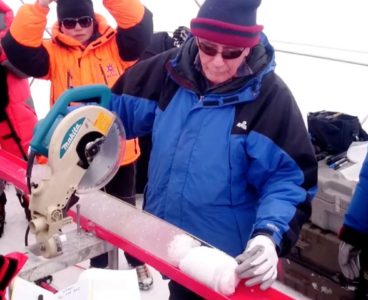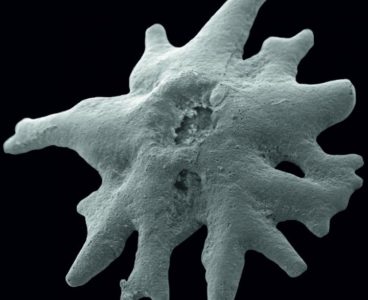
Collecting Clean Water from Air, Inspired by Desert Life
Trapping Toxic Compounds with ‘Molecular Baskets’
Getting to Know the Microbes That Drive Climate Change
A new understanding of the microbes and viruses in the thawing permafrost in Sweden may help scientists better predict the pace of climate change. Microbes have significant influence over global warming, primarily through the production of – or consumption of – methane, and new details about these microscopic beings’ genetics is now available, thanks to…
Breakthrough in Controlling DNA-Based Robots
Researchers Invent Nano-coating for Synthetic Leather that Cleans Itself
If you’ve ever stained your favorite leather-look jacket or had to peel your bare legs from a sticky vinyl car seat in the summer, the solution to your woes just might be found on the surface of a lotus leaf. Researchers at The Ohio State University have previously used a nano-engineered texture based on the…
How to Fight Side Effects of Hormone Therapy for Prostate Cancer
How Climate Change Weakens Coral ‘Immune Systems’
If this winter finds you stressed out and fighting a sinus infection, then you know something of what coral will endure in the face of climate change. They don’t have sinuses, but these colorful aquatic animals do actually make mucus–“coral snot” is a thing–and the balance of different species of bacteria living in their mucus…
Breakthrough RNA Nanotechnology Fights Cancer
A new study shows that attaching antibody-like RNA nanoparticles to microvesicles can deliver effective RNA therapeutics such as small interfering RNA (siRNA) specifically to cancer cells. Researchers used RNA nanotechnology to apply the RNA nanoparticles and control their orientation to produce microscopic, therapy-loaded extracellular vesicles that successfully targeted three types of cancer in animal models.…
Study Finds Drones More Damaging Than Bird Strikes to Planes
As part of a multi-institution Federal Aviation Administration (FAA) study focused on unmanned aerial systems, researchers at The Ohio State University are helping quantify the dangers associated with drones sharing airspace with planes. Last week, a research team from the Alliance for System Safety of UAS through Research Excellence (ASSURE) released a report concluding that drone collisions with large manned…
Researchers Capture Oldest Ice Core Ever Drilled Outside the Polar Regions
The oldest ice core ever drilled outside the polar regions may contain ice that formed during the Stone Age–more than 600,000 years ago, long before modern humans appeared. Researchers from the United States and China are now studying the core–nearly as long as the Empire State Building is tall–to assemble one of the longest-ever records…
Newly Discovered Biomarkers May Lead to Promising Alzheimer’s Diagnostic Tool
Rock Exposed in WWI Trenches Offers New Fossil Find
An unusual fossil find is giving scientists new ideas about how some of the earliest animals on Earth came to dominate the world’s oceans. An international research team found 425-million-year-old fossilized remnants of juvenile crinoids, a distant ancestor of today’s sea lilies, encased in iron oxide and limestone in the Austrian Alps. Researchers collected the…
West Antarctic Ice Shelf Breaking Up from the Inside Out
A key glacier in Antarctica is breaking apart from the inside out, suggesting that the ocean is weakening ice on the edges of the continent. The Pine Island Glacier, part of the ice shelf that bounds the West Antarctic Ice Sheet, is one of two glaciers that researchers believe are most likely to undergo rapid…
Testing for Malaria, Cancer at Home, Via Cheap Paper Strips
What if testing yourself for cancer or other diseases were as easy as testing your blood sugar or taking a home pregnancy test? In a few years, it might be. Chemists at The Ohio State University are developing paper strips that detect diseases including cancer and malaria–for a cost of 50 cents per strip. The…













